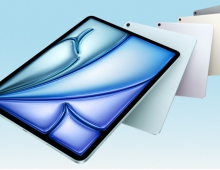
iPhone 6 Plus Is $100 Costlier For Consumers But Less Than $16 More Expensive for Apple to Make
For consumers opting to buy Apple's iPhone 6 Plus rather than the iPhone 6, the additional 0.8 inches of screen size will cost $100 extra. However, for Apple, the iPhone 6 Plus costs only about $16 more to produce, delivering to the company a hefty margin. The bill of materials (BOM) of the iPhone 6 equipped with 16 GB of NAND flash memory amounts to $196.10, according to a preliminary estimate by the Teardown Mobile Handsets Intelligence Service at IHS Technology. The cost of production rises to $200.10 when the $4.00 manufacturing expense is added.
The BOM of the iPhone 6 Plus amounts to $211.10, and rises to $215.60 with the additional $4.50 manufacturing cost added. This is only $15.50 higher than the total for the iPhone 6, according IHS.
"Apple has always been adept at offering higher-end iPhone models with enhanced, desirable features—and then pricing those versions for maximum profitability," said Andrew Rassweiler, senior director, cost benchmarking services for IHS. "In the past, the premium versions of iPhone offered higher memory configurations for additional profit. While Apple continues this memory strategy, the company is also taking a similar approach with the iPhone Plus, structuring its pricing to add bottom-line profit on models that have a very desirable feature: a large phablet-sized display."
With a contract from a wireless operator, the 16GB version of the iPhone 6 is priced at $200, while the Plus model amounts to $300. The unsubsidized pricing for the two phones is $649 and $749, respectively.
The table below presents the preliminary BOM and manufacturing cost estimate of the Phone 6 and iPhone 6 Plus.

The most obvious difference between the two new Apple smartphone models is the display, with the iPhone 6 sporting a 4.7-inch screen, and the Plus coming in at 5.5 inches. However, while the larger screen is more expensive, it doesn’t account for the entire cost differential between the two phones; the Plus also carries higher BOMs for its enhanced camera and battery subsystems.
For both the iPhone 6 and iPhone 6 Plus models, the screens feature in-touch in-plane switching (IPS) liquid crystal displays (LCD) supplied by two sources: LG Display and Japan Display. The displays likely employ Corning’s Gorilla 3 glass, compared to Gorilla 2 in the iPhone 5S and 5C.
Because of its larger size, the display/touch-screen subsystem in the iPhone 6 Plus carries a cost of $52.50, compared to $45.00 for the iPhone 6.
Both displays are also more expensive than for the smaller, 4-inch display/touch subsystem used in the iPhone 5S model, at $41.00, based on pricing from October 2013.
The larger form factor of the iPhone 6 Plus allows it to employ a bigger, higher-capacity battery. The iPhone 6 Plus battery has a capacity of 11.1 watt-hours (Wh), compared to 6.91 Wh for the iPhone 6. Because of this, the battery subsystem in the Plus is $1.00 more expensive than in the iPhone 6.
Also owing to their larger sizes, the iPhone 6 and iPhone 6 Plus both have more capacity than the 5S, which came in at just 5.92 Wh.
Furthermore, the camera of the Plus is $1.50 more expensive than in the iPhone 6.
In a major departure in component supplier selection from previous models, the critical applications processor chip used in both the new iPhones is not supplied entirely by Samsung.
The new models use the Apple-designed A8 processor, replacing the A7 employed in the iPhone 5S. The A8 exhibits new markings that are not consistent with previous A-series processors. IHS believes that Apple now is splitting its orders for the A8 processor between semiconductor foundry Taiwan Semiconductor Manufacturing Co. Ltd. (TSMC) and Samsung.
The A8 integrates twice the number of transistors as in the previous-generation A7 processor used in the iPhone 5S, but the part is still smaller than the A7 due to the use of more advanced semiconductor manufacturing technology. With its more advanced design and manufacturing, the A8 in the iPhone 6 and iPhone 6 Plus models costs $20.00, compared to $17.00 for the A7 in the iPhone 5S.
The new-model iPhones also feature some key changes to the sensor/microphone subsystem.
In the individual iPhone 6 and iPhone 6 Plus models analyzed, IHS identified a 6-axis sensor supplied by InvenSense. Previous iPhones torn down by IHS used accelerometers from Bosch Sensortec and Gyroscopes supplied by ST Microelectronics. The new iPhone 6 and 6 Plus feature an accelerometer from Bosch Sensortec and the 6-axis sensor from InvenSense. It may be possible that these parts are multisourced, even though the small number of samples analyzed by IHS does not reveal this.
The new iPhones also add a barometric sensor, marking the first time Apple has employed this type of sensor in its smartphone line.
IHA also says that iPhone 6 and iPhone 6 Plus contain the same AKM electronic compass used in previous models.
To support the new Apple Pay feature, the new iPhones add a near-field communication (NFC) chip, another first for Apple’s smartphones. The latest phones include the PN65V NFC controller from NXP Semiconductors, as well as a previously unseen NFC-booster integrated circuit from AMS.





















